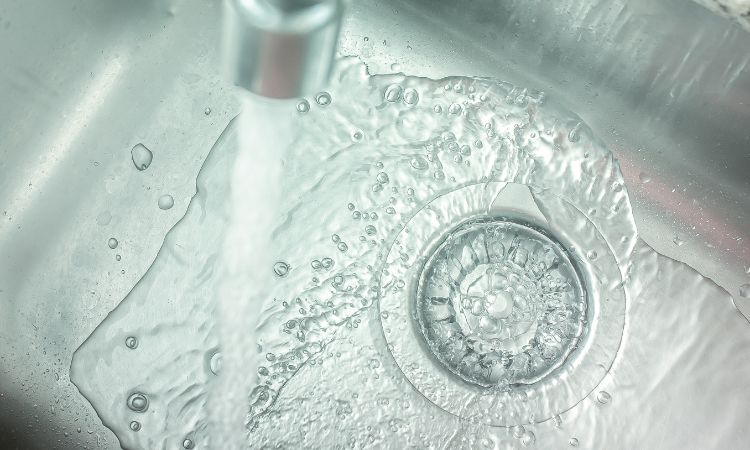What're your beliefs about How to Fix a Slow Draining Sink?

Introduction
We've all existed: You're cleaning your teeth or washing your hands, and you discover the water merging in the sink. Instead of rapidly swirling down the tubes, it lingers, transforming your once-refreshing morning routine right into a mini overload scene. A slow-draining sink isn't simply aggravating; it's commonly a sign of larger plumbing concerns prowling beneath the surface area. Fortunately is that most slow-draining sinks can be taken care of with a little expertise, a few basic tools, and some perseverance. All set to tackle this project head-on? Allow's roll up our sleeves and dive right in.
Understanding the Root Causes Of a Slow-Draining Sink
Before you begin poking around in your pipes, it assists to recognize what could be creating the downturn. Comprehending the source makes it simpler to pick the appropriate repair.
Usual Perpetrators Behind Slow Drainage
So, what's clogging things up? Typically, it's a combination of daily debris-- assume hair, soap scum, toothpaste deposit, and remaining food particles. Over time, these little bits collect and hold on to the pipe wall surfaces, slowly narrowing the flow and making it harder for water to go through. In many cases, natural resource from difficult water can also contribute to the crud, developing the perfect storm for stubborn obstructions.
When is it Time to Act?
If you see the water draining pipes slower than common, it's a good idea to interfere sooner rather than later on. Waiting too long could result in complete blockages, unpleasant smells, and even pipeline damages. If the water takes greater than a couple of seconds to remove after switching off the faucet, consider it a red flag and prepare yourself to put on your do it yourself hat.
Tools and Products You'll Need
The right tools make all the distinction. Fortunately, you won't require a totally stocked plumbing professional's van to finish the job.
Vital Tools for DIY Repairs
A bettor is your best beginning point. A small, sink-sized bettor develops suction that can dislodge minor clogs. For even more consistent blockages, a drainpipe serpent (in some cases called a plumbing professional's auger) functions marvels. A pair of gloves, a flashlight, and possibly a set of safety safety glasses are additionally handy.
Suggested Cleaning Solutions
Light meal soap and hot water can help break down oily accumulation. A mix of cooking soda and vinegar is a tried and true natural remedy, and chemical cleaners offer a more green approach. Maintain chemical drainpipe cleansers as a last resource, as they can be extreme on your pipelines.
Security First: Safety Measures and Prep work
Before you launch into unclogging mode, think of security. You're taking care of potentially unclean water and particles, so slip on a pair of handwear covers. If you're utilizing chemical cleansers, guarantee the space is well-ventilated and adhere to the instructions on the tag.
Protective Gear and Office Configuration
Put down some old towels or cloths around the sink area to capture splashes. Clear away any kind of products that might enter your method, like soap dispensers or toothbrush holders. Make certain you have great illumination-- get hold of a flashlight if needed.
Step-by-Step Guide to Repairing a Slow-Draining Sink
Now, allow's enter the nitty-gritty. This step-by-step procedure will certainly assist you through basic strategies to recover your sink's drain.
Step 1: Get Rid Of and Tidy the Stopper
Frequently, the stopper (that tiny plug you lower to obstruct water) is the first offender. Remove it carefully and wipe any type of hair or crud entraped around its base. Wash it completely before putting it back in position.
Step 2: Utilize a Plunger to Remove Debris
Got that bettor all set? Setting it over the drain and offer it a few firm pumps. The idea is to create suction that can loosen any kind of clog. If you see bits of particles floating up, you get on the best track.
Step 3: Try a Drain Snake or Wire Wall Mount
If the plunger doesn't work, it's time to highlight the drain snake. Gently feed it into the drain and spin as you go. You might feel some resistance-- that's likely the blockage. Maintain turning and drawing up until you eliminate the blockage. If you don't have a drain snake, a corrected cable hanger can operate in a pinch.
Tip 4: Use a Do It Yourself Drain Cleanser
An all-natural cleaner made from cooking soda and vinegar can break down recurring grime. Put half a mug of baking soda into the drain, complied with by half a mug of vinegar. Let it fizz for around 15 mins, then flush with warm water. This chain reaction often does marvels for minor blockages.
Tip 5: Reassemble and Check the Sink
Put everything back together and run the faucet. Does the water now swirl down the tubes at a reputable speed? If yes, offer yourself a pat on the back. If not, don't despair-- there are still a couple of even more tricks up your sleeve.
Different Approaches for Stubborn Clogs
Not all clogs are developed equal. If your sink still refuses to work together, take into consideration these alternate remedies.
Sodium Bicarbonate and Vinegar Technique
We currently touched on this, however it deserves keeping in mind again. This gentle, environmentally friendly method is safer than chemical cleansers and usually rather effective.
Enzymatic Drain Cleansers
Enzyme-based cleansers utilize natural microorganisms to absorb organic matter. They're an exceptional option if you're aiming to prevent extreme chemicals. Just bear in mind, they may take a bit longer to function their magic.
Chemical Drain Cleaning Company: Advantages And Disadvantages
Chemical cleansers can blow up via difficult obstructions quick, but they're not without drawbacks. They can produce heat and fumes, damage pipes if utilized excessively, and pose ecological dangers. Use them sparingly, and constantly comply with the instructions carefully.
Preventive Measures to Maintain Your Sink Flowing
Prevention is the very best remedy. By adopting a few easy routines, you can maintain your sink from decreasing in the first place.
Normal Cleansing Routines
Clean down the sink basin and component area on a regular basis. Get rid of hair or food fragments before they have an opportunity to wash down the drain.
Staying Clear Of Dangerous Materials Away
Reconsider prior to unloading coffee premises, oil, or coarse veggie scraps down the sink. These offenders cling to pipeline wall surfaces, producing blockages over time.
Routine Maintenance Checks
Set up a fast month-to-month inspection. Run warm water via the sink for a couple of minutes, paying attention to the circulation. If it seems slow, act fast prior to it becomes a full-on obstruction.
When to Call an Expert Plumbing Technician
Sometimes, despite just how tough you try, that obstruct simply will not budge. That's when it's time to generate the pros.
Indications That Show a More Serious Problem
If your sink drains pipes slowly regardless of several attempts, or if you discover water supporting in various other fixtures (like your shower or toilet), you may have a more major plumbing issue hiding much deeper in the system.
Stabilizing Do It Yourself Efforts with Expert Aid
While DIY can save you money and supply a feeling of achievement, there's no shame in calling a professional. An expert plumber can assess your whole plumbing configuration, making sure there's no underlying damages or long-lasting problem that can cost you a lot more in the future.
Comparing Costs and Long-Term Solutions
Before making a decision, think about the big picture. A cheap, quick fix might solve the trouble temporarily, but purchasing an extra permanent service might conserve you cash and stress in the long run.
Considering the Expenditures of Do It Yourself vs. Specialist Repairs
DIY fixes typically cost bit more than the rate of a plunger or a bottle of baking soda. Expert services, on the other hand, come with a price tag yet may stop repetitive issues and expensive repair work later.
Purchasing Top Quality Fixtures and Upgrades
If your sink's style contributes to constant blockages, it might be worth updating to higher-quality components or changing the plumbing design. Consider this a financial investment in your home's capability and convenience.
Final thought
A slow-draining sink can seem like a minor inflammation, yet it's typically an indication that your pipes requires a little TLC. By comprehending the origin, using the right tools and techniques, and dedicating to straightforward safety nets, you can maintain your sink flowing easily. And when all else falls short, never ever hesitate to employ an expert-- your home's pipes is worth the financial investment in care and upkeep.
How to Fix a Slow Sink Drain: 7 Methods
Clean the Stopper
Remove and clean the stopper. A pop-up drain stopper and the sloped shape of the sink are designed for optimal debris and build-up collection. If you do not have a drain zip tool, or the tool cannot clear out all debris, another option is to remove and clean the pop-up.
Most pop-ups are held in place with a nut attached to the drain just under the sink. To remove the pop-up, reach behind the drain pipe under the sink to find the pop-up nut. Once the nut is removed, the pop-up can be removed from the sink drain, cleaned, and reinstalled.
Use Homemade Drain Cleaner
Employ a DIY solution. A homemade drain cleaner can clean the drain pipes after the larger debris has been pulled out. The chemical reaction caused by combining two common and inexpensive household products, like vinegar and baking soda, can help break down the mucky build-up on the inside of the drain pipes and get the drain flowing freely again.
Pour 1/2 cup of baking soda down a slow-draining sink. Follow it with 1/2 cup of vinegar. Let the mixture rest for a few minutes. Rinse the solution with boiling water to clear the clog. Clear the Sink Overflow
Clean the overflow. The sink overflow is another place where debris and build-up can be collected over time. If a sink drains slowly and cleaning the drain doesn't work, try to clean the overflow.
The overflow opening is intended to divert water into the drain if it accidentally rises too high in the sink. It also allows air into the drain when the sink is filled with water, helping it drain faster.
Use a Plunger
Give it a good plunging. A plunger can be used on a slow sink drain; it does not have to be reserved for a complete drain stoppage. Plunging can help loosen and dislodge hair and debris in the pipe. To ensure the plunging motion is effective, cover the sink overflow with a rag or some duct tape to make a seal before plunging.
Use a Snake
Try a snake. If straightforward methods aren't working, consider getting a drain auger or snake to clear a bathroom or kitchen sink drain. A drain snake is a thin, flexible metal cable that can be wound or unwound on a reel. It has a drill or corkscrew-like end that can penetrate clogs, dislodge them, and pull them out.
Clean the P-Trap
Unclog the P-trap. If all other methods fail to clear a stubborn clog, the last step before calling a professional is removing and cleaning the P-trap or the drain pipe under the sink with a bend shaped like a "P" rotated 90 degrees, clockwise to the right. That U-shaped bend in the pipe is a top spot for gunk, like hair, food, grease, and debris, to build up and get clogged.
Once you remove the drain pipe, you need a bucket to catch residue, water, and debris. You might need Channellock pliers or a wrench if you can't unscrew the slip nuts by hand.
Tips to Prevent Slow-Draining Sinks
Sinks are only for water, soap, or toothpaste: Use toothpaste correctly and fully lather it in the mouth; do not let globs of toothpaste go undissolved down the drain. Stop hair and debris from going down the drain: Refrain from brushing your hair over the sink, or get a fine mesh drain hair catch for the drain hole. If shaving your face over the sink, wipe away the stubble with a washcloth, and rinse the washcloth and razor in a wash basin. Empty the water into the toilet or tub drain. Clean the sink stopper regularly: Remove the stopper and clean out any hair and dirt that may have lodged in the drain. Flush the sink with hot water regularly: Hot water will help move or loosen hardened or sludgy toothpaste, grease, mineral deposits, and hair. Some experts suggest using boiling water; however, beware since boiling water might melt PVC or crack porcelain.

As an enthusiastic person who reads about 7 Ways To Fix A Slow-Draining Sink Before You Call A Plumber, I imagined sharing that excerpt was important. Enjoyed reading our blog? Please share it. Let somebody else locate it. Many thanks for your time. Return soon.
Source
 Joseph Mazzello Then & Now!
Joseph Mazzello Then & Now! Jurnee Smollett Then & Now!
Jurnee Smollett Then & Now! David Faustino Then & Now!
David Faustino Then & Now! Bo Derek Then & Now!
Bo Derek Then & Now! Robin McGraw Then & Now!
Robin McGraw Then & Now!